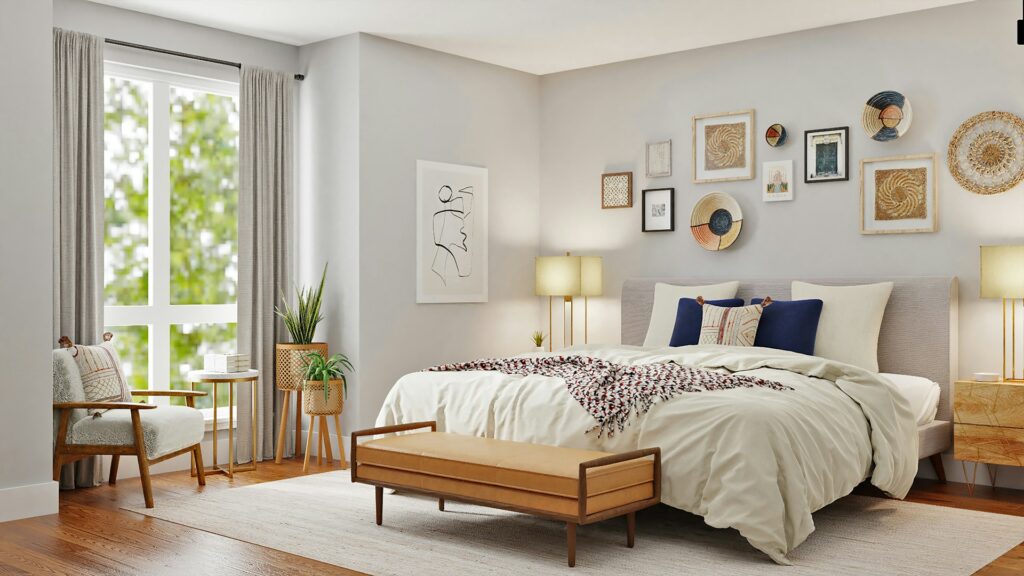In today’s increasingly eco-conscious world, sustainable interior design is a vital consideration for homeowners and businesses alike. By creating spaces that consider the environment, energy efficiency, and overall well-being, you can demonstrate your commitment to a greener future while enjoying the numerous benefits of an eco-friendly space. Singapore, a city renowned for its sustainable architectural achievements, is the perfect place to embrace eco-friendly interior design practices in your home or office.
In this informative article, we’ll delve into the importance of sustainable interior design and provide practical tips and trending ideas for integrating eco-friendly elements into your Singapore space. From using sustainable materials to optimising natural light and ventilation, prepare to be inspired by the endless possibilities of creating a stylish, comfortable, and environmentally responsible living or working environment.
Choosing Sustainable Materials in Interior Design
By opting for sustainable materials in your home or office design, you can significantly reduce your carbon footprint and contribute positively to the preservation of natural resources. Consider the following eco-friendly materials when making design decisions:
1. Reclaimed wood: Using reclaimed wood for furniture, flooring, or decorative elements can add warmth and character to your space while reducing deforestation. Additionally, these materials often possess unique visual characteristics due to their previous usage, lending a distinctive element to your design.
2. Natural and organic textiles: Incorporating eco-friendly textiles made from organic cotton, hemp, or linen can contribute to the overall sustainability of your space. These materials are grown without the usage of harmful chemicals and pesticides, ensuring a healthier environment and reduced environmental impact.
3. Bamboo: As a rapidly renewable resource, bamboo is an excellent alternative to traditional timber. Its versatility, strength, and lightweight properties make it an ideal material for use in a range of applications, from furniture to flooring and wall coverings.
Implementing Energy-Efficient Lighting and Appliances
The use of energy-efficient lighting and appliances can significantly reduce energy consumption and greenhouse gas emissions in your home or office. Strategies for implementing eco-friendly lighting and appliances include:
1. LED lighting: LED lights consume far less energy and have a longer lifespan compared to incandescent and CFL bulbs. Opt for LED lighting for both ambient and task lighting to reduce energy consumption and improve overall efficiency.
2. ENERGY STAR-rated appliances: Appliances with the ENERGY STAR rating are specifically designed to be energy-efficient, offering significant savings on your electricity bills and reducing your carbon footprint.
3. Smart and automated systems: Install smart thermostats and lighting controls to help regulate energy usage and minimise waste. These systems can automatically adjust temperature and lighting levels based on factors like occupancy or daylight availability, ensuring the most efficient use of resources.
Optimising Natural Light and Ventilation
Utilising natural light and ventilation can reduce the need for artificial lighting and air-conditioning, lowering energy consumption and associated emissions. Consider the following methods to maximise natural light and ventilation:
1. Window placement: Prioritise large windows or glass doors in areas that receive adequate sunlight. Where privacy is a concern, opt for high-level windows to maintain natural light access without compromising on privacy.
2. Solar tubes or skylights: Installing solar tubes or skylights can provide additional natural light in spaces with limited window availability. These features help to illuminate dark corners and reduce reliance on artificial lighting.
3. Cross-ventilation: Ensure that all rooms have multiple openings, such as windows and vents, to facilitate cross-ventilation and reduce reliance on air-conditioning. This can have a significant impact on both energy consumption and indoor air quality.
Incorporating Greenery in Your Design
Integrating greenery into your interior design can contribute to both environmental sustainability and improved well-being. Consider these approaches to incorporate plants and greenery into your space:
1. Vertical gardens: Installing a vertical garden, also known as a green wall, can improve indoor air quality while adding an eye-catching design element. These gardens require minimal floor space and can be utilised in both residential and commercial settings.
2. Living roofs: A living roof, featuring vegetation and a growing medium, offers numerous environmental benefits, such as stormwater management, improved air quality, and energy efficiency.
3. Indoor plants: Strategically placed indoor plants can contribute to a cleaner, healthier atmosphere by purifying the air and absorbing toxins. Popular indoor plants for Singapore homes and offices include the snake plant, pothos, and spider plant.
Selecting Eco-friendly Furniture and Decor
Choosing furniture and decor with environmental considerations in mind can have a significant impact on the overall sustainability of your space. Keep these factors in mind when selecting furnishings and accessories:
1. Locally sourced products: Opting for locally produced furniture and decor minimises the environmental impact of transportation and supports local businesses. Look for products made by local artisans and businesses to promote sustainability in your community.
2. Recycled or upcycled items: Give new life to old or discarded furniture and accessories by opting for recycled or upcycled pieces. Not only do these items have a lower environmental footprint, but they also add character and charm to your space.
3. Non-toxic products: Prioritise products and materials free from harmful chemicals, such as volatile organic compounds (VOCs), which can lead to poor indoor air quality and health issues. This includes paint, flooring, and upholstery materials that are labelled as low-VOC or VOC-free.
By implementing these practical tips and embracing eco-friendly interior design trends, you can create a visually stunning and sustainable space in your Singapore home or office. From material selection to lighting, each aspect of the design can be approached with sustainability in mind, contributing to a healthier environment and a brighter future for generations to come.
Elevate Your Sustainable Design with Vanguard Interiors
Embracing eco-friendly interior design principles can significantly improve the sustainability of your Singapore home or office, while also positively impacting the environment and your well-being. By implementing these practical tips, from using sustainable materials and energy-efficient lighting to incorporating greenery, you can create a stunning, environmentally conscious space that supports a greener future for generations to come.
If you’re ready to embark on your journey to a stylish and sustainable home or office, let Vanguard Interiors be your guide. Our expert designers are well-versed in the latest sustainable interior design trends and will work closely with you to create a personalised design plan tailored to your unique preferences and requirements.
Don’t wait to bring your eco-friendly vision to life. Contact Vanguard Interiors today and schedule a consultation with our dedicated team of interior design contractors, passionate about creating sustainable living and working environments in Singapore.



